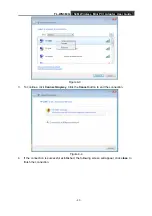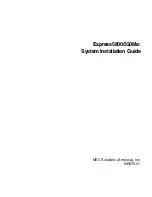
TL-WN360G
54M Wireless Mini PCI Adapter User Guide
- 31 -
trade off produces a signal that is, in effect, louder and thus easier to detect, provided that the
receiver knows the parameters of the spread-spectrum signal being broadcast. If a receiver is
not tuned to the right frequency, a spread-spectrum signal looks like background noise.
There are two main alternatives, Direct Sequence Spread Spectrum (DSSS) and Frequency
Hopping Spread Spectrum (FHSS).
¾
SSID -
A
S
ervice
S
et
Id
entification is a thirty-two character (maximum) alphanumeric key
identifying a wireless local area network. For the wireless devices in a network to
communicate with each other, all devices must be configured with the same SSID. This is
typically the configuration parameter for a wireless PC card. It corresponds to the ESSID in
the wireless Access Point and to the wireless network name.
¾
WEP
(
W
ired
E
quivalent
P
rivacy)
-
A data privacy mechanism based on a 64-bit or 128-bit or
152-bit shared key algorithm, as described in the IEEE 802.11 standard.
¾
Wi-Fi -
A trade name for the 802.11b wireless networking standard, given by the Wireless
Ethernet Compatibility Alliance (WECA, see http://www.wi-fi.net), an industry standards
group promoting interoperability among 802.11b devices.
¾
WLAN
(
W
ireless
L
ocal
A
rea
N
etwork)
-
A group of computers and associated devices
communicate with each other wirelessly, which network serving users are limited in a local
area.
¾
WPA
(
W
i-Fi
P
rotected
A
ccess)
-
A wireless security protocol use TKIP (Temporal Key
Integrity Protocol) encryption, which can be used in conjunction with a RADIUS server.

































